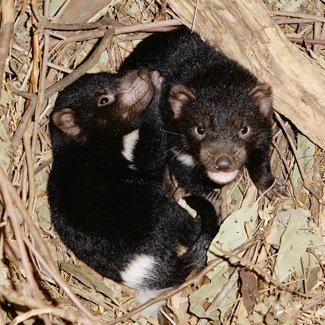New method ranks species’ extinction risk

IN THE WAR AGAINST species loss, a new method of determining extinction risk will aid conservationists in choosing which species can be saved and which have gone too far down the path of extinction.
Previously, the IUCN (International Union for the Conservation of Nature) Red List has been the yardstick used to prescribe the status of a given species. It categorises animal species into nine classes: Extinct, Extinct in the Wild, Critically Endangered, Endangered, Vulnerable, Near Threatened, Least Concern, Data Deficient, and Not Evaluated.
Professor Corey Bradshaw, director of ecological modelling at the University of Adelaide’s Environment Institute, recently developed the SAFE index (Species Able to Forestall Extinction), which, in effect, calculates how few individuals a species can dwindle to, before extinction becomes a certainty. This system would work best in conjunction to the IUCN Red List, he says.
“Most species don’t go extinct from just one process, but they eventually reach a threshold” he says. “Below that threshold they become susceptible to being wiped out by random events, like bush fires or cyclones.”
For most species, the scientists found, a threshold of around 5000 individuals is a reliable cut off. Below that, they are susceptible to being wiped out by random events.
Conservation triage
The scientists have drawn parallels between their own fight against biodiversity loss and efforts of battlefield doctors, nurses and medics who have to make tough choices about who can be saved. “If you work on the most helpless case, the other guys you could’ve saved are going to die,” Corey says. “It’s a trade-off where you try to maximise the number of people you’re saving. It’s the same thing in conservation.”
The number of potential extinctions are frequent – the IUCN says the rate is currently somewhere between 1000 and 10,000 times higher than it should be. And there’s only so much funding and resources to go around. What Corey and his colleagues are saying is that it’s better to direct those resources to where they can make the biggest impact – and in the process, let go of some species.
Using the SAFE index, conservationists can look at data from two species that may both be listed as critically endangered by the IUCN and tell which one is more likely to benefit from aid, and which is more likely to go extinct regardless. “We can’t save everything; there’s no way we can save everything. So we have to put our eggs in the basket that is going to give us the highest probability of success,” Corey says.
The Red List
There are many examples of species that demonstrate why the SAFE index may be a good tool for conservation triage.
The Australian magpie goose, is one such case. Originally a regular part of the indigenous diet throughout Australia, it became a popular game bird for European settlers; the subsequent spike in hunting reduced its range to the Northern Territory and just a few pockets of southern Australia. The IUCN flagged the species as something to watch, but the SAFE index indicates it’s perfectly viable because of the remaining population is in the millions.
While the Red List provides information about species’ population declines, the SAFE index gives an indication of just how low the population can go. In this sense, both systems work in conjunction, Corey says.
Australian governments are currently obliged to implement recovery plans for any species listed as vulnerable or threatened in the EPBC (Environment Protection and Biodiversity Conservation) Act, but for a long time the question has been: at what level is a species considered recovered?
It is this benchmark that Corey says has the SAFE index will provide, and it will therefore have far-reaching implications in both legislature and economic ventures. “If a species is threatened by some kind of development – say a wind farm or agriculture development – it has to account for things like restoration and making sure its not going to exacerbate the situation,” he says. “The SAFE index is a way to help measure that.”
RELATED STORIES

